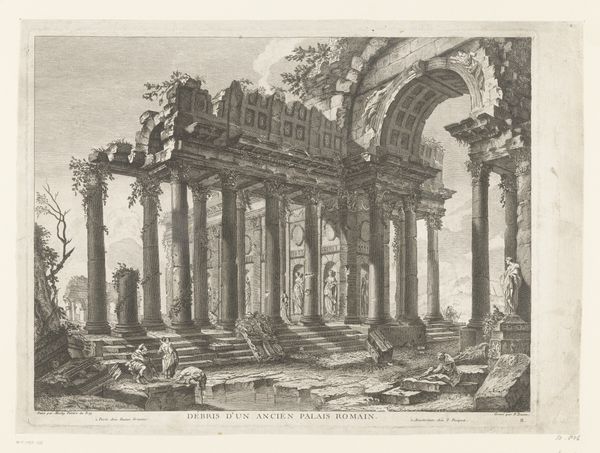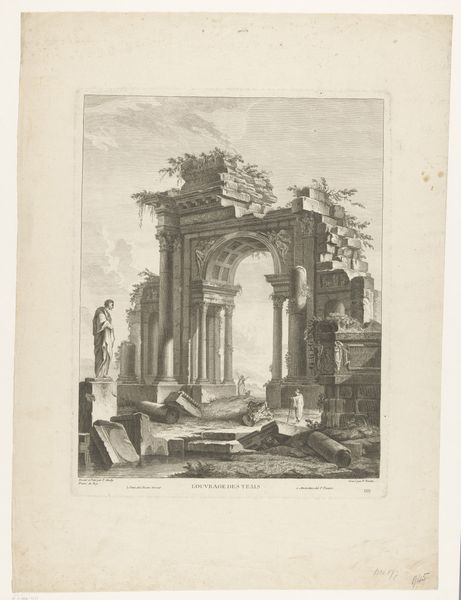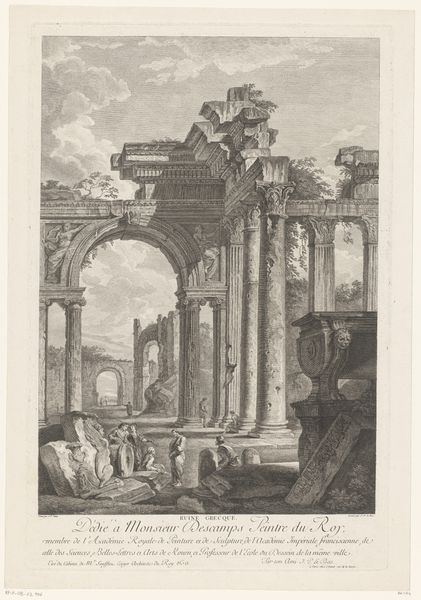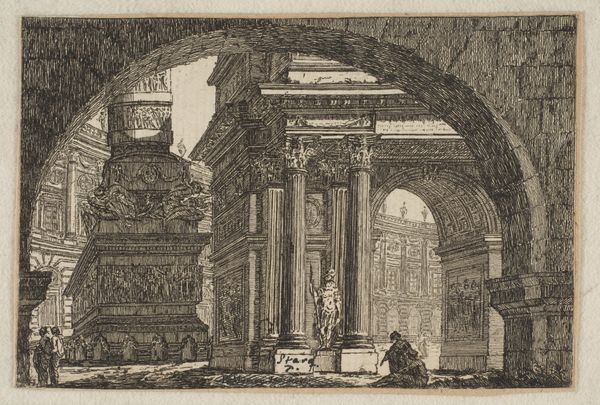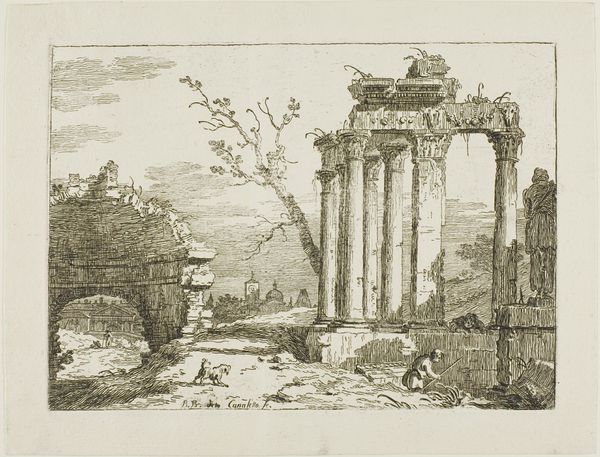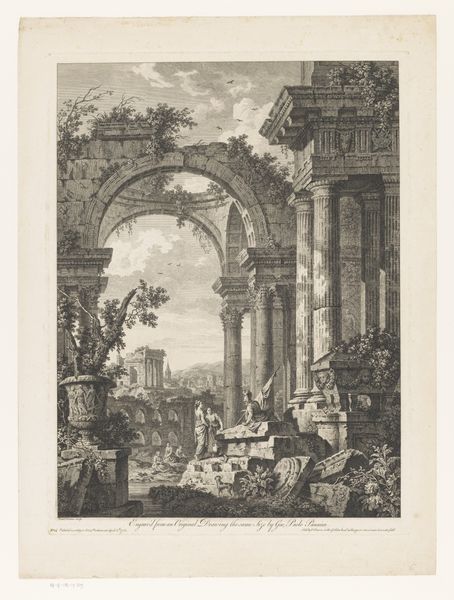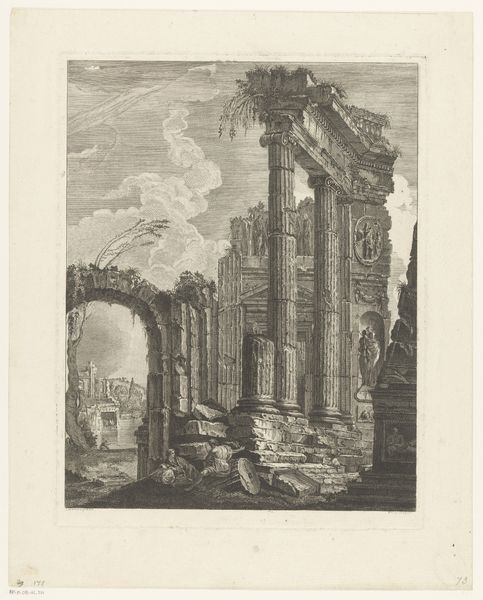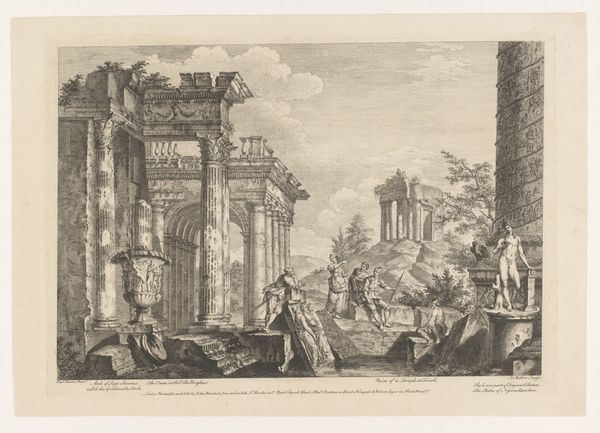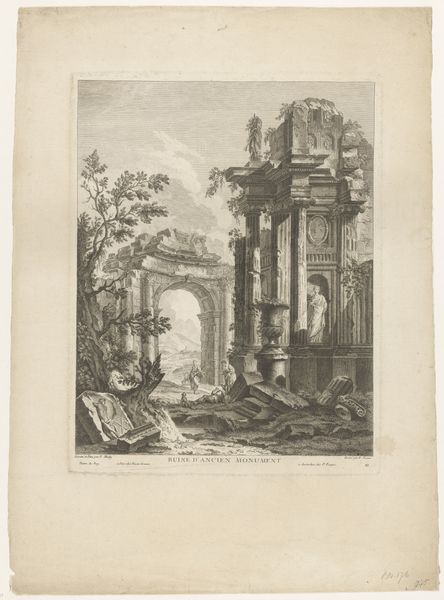
engraving
#
neoclacissism
#
old engraving style
#
landscape
#
19th century
#
cityscape
#
history-painting
#
engraving
Dimensions: height 283 mm, width 417 mm
Copyright: Rijks Museum: Open Domain
Curator: Welcome. Here we have "Ruines met een beeld van een leeuw," an engraving by Johann Ferdinand von Hohenberg, created sometime between 1742 and 1806. Editor: What strikes me immediately is the stillness. Even with the figures populating the scene, there's a profound sense of melancholy and contemplation of something lost. Curator: It's a landscape imbued with the aesthetics of neoclassicism, depicting ruins as potent symbols of historical reflection and perhaps even decline. Look at the medium itself, engraving, and how the laborious process of carving lines into a metal plate echoes the slow, destructive march of time. Editor: Exactly. The lion statue is particularly compelling. The lion symbolizes power and dominion. Here, though, it’s weathered, a silent guardian amidst crumbling monuments. Curator: Consider also how engravings like these were relatively reproducible, making them a means of disseminating ideas about history and artistic ideals to a broader audience. Neoclassicism, after all, aimed to democratize beauty. Editor: But that supposed democracy carries heavy symbolic baggage. The ruins are distinctly Roman. Aren't they visually alluding to empire, governance, and what endures of power structures long after their operational lifetimes? The careful detail almost feels forensic. Curator: The print medium allows a close study of those forensic details that might otherwise be ignored in paintings, which invite the viewer closer into the means and processes of production themselves. But even the engraver participates in what some might call the 'violence' against the initial medium, and in the slow attrition of history itself. Editor: In that sense, perhaps, these ruins do become a new form of 'building' – the artist has repurposed destruction, memory and symbolism, forging a meditation on what comes after civilization falls. The material presence and historical memory in that regard have new life. Curator: I see your point entirely. And I suppose that careful construction also allows for a closer examination of the socio-historical contexts as much as a psychological landscape as it continues to crumble under its own weight. Editor: Ultimately, this seemingly straightforward landscape pushes us to contemplate the relationship between making, unmaking, and enduring ideas that exist far beyond tangible construction.
Comments
No comments
Be the first to comment and join the conversation on the ultimate creative platform.

